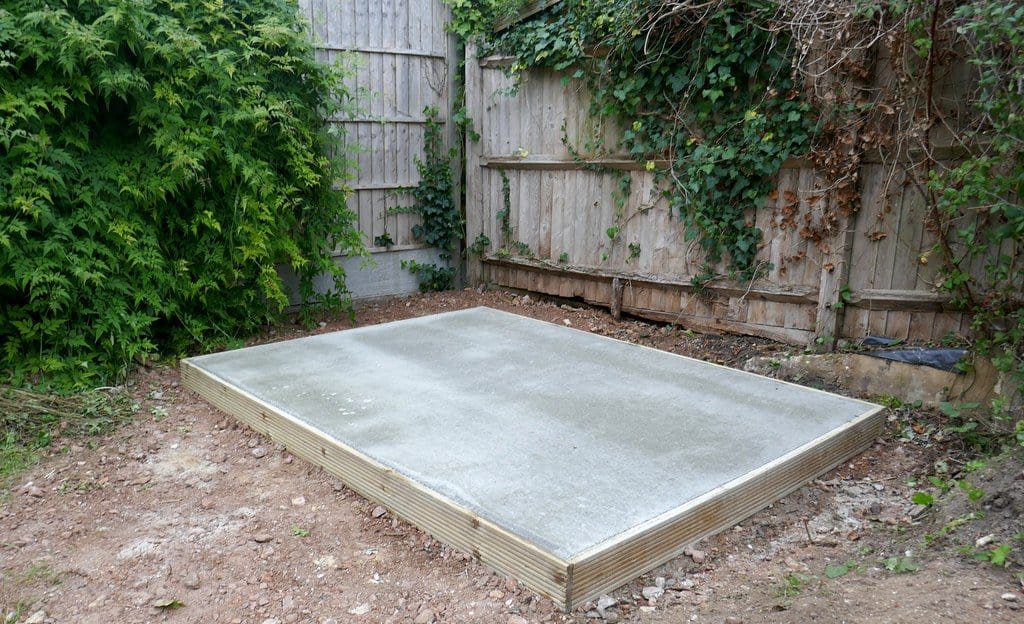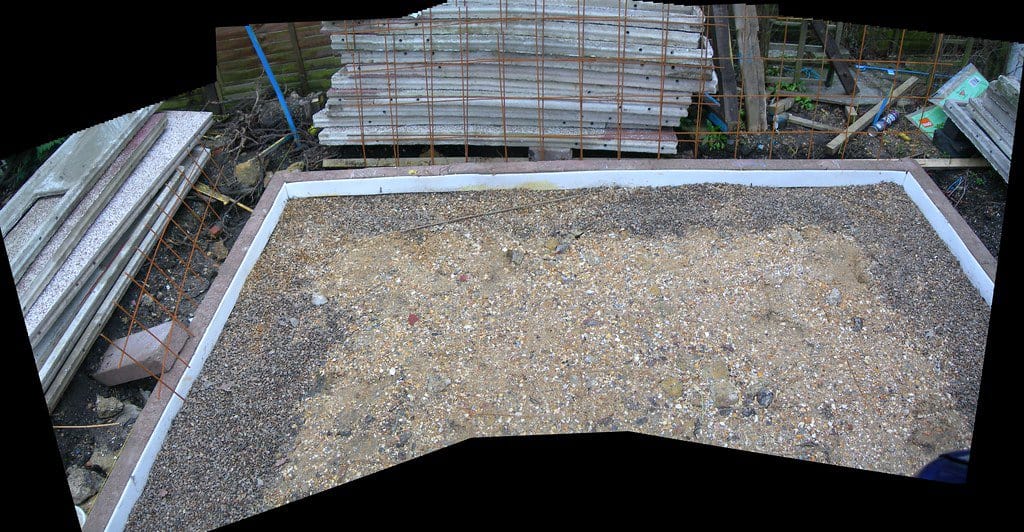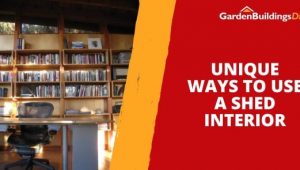Jump to:
A fundamental rule for any summer house base is that it should be firm and level. This guide covers everything you need to know about the various available options.
Still deciding which summerhouse is right for you? Read our guide to choosing your summerhouse for everything you need to know.
What Base Do I Need for a Summer House?
You have four main options: concrete, wooden deck, paving slab, and gravel. Each has its advantages, so consider factors like cost, durability, and appearance.
1. Concrete base

A concrete base is made by pouring concrete onto a compacted hardcore sub-base, ideally with a damp-proof membrane, and letting it set. This creates a flat, solid surface for your summer house to sit on. It’s durable and great for heavy structures.
Keep in mind that this summer house base might take more work and cost a bit more. The skill and effort required for tasks like pouring and levelling can be demanding. But like any hard work, all of this can be worth it for the stability and longevity it offers to your garden building.
Note: Depending on the project size, you might need to hire professionals. But a DIY approach might still be feasible for smaller projects.
2. Wooden decking
Decking is an attractive, simple solution that can blend well into your garden and may even allow you to utilise a structure you already have. With floor bearers still raising it, your summerhouse could be built straight onto the decking without issue. Decking that extends beyond the summerhouse can be mult-functional. However, there are a few downsides.
Wooden decking is not suitable for heavy structures, so you should only use this for a small summerhouse, and if you have reinforced it with additional joists and load-bearing supports.
Timber decking also required regular upkeep, such as cleaning, staining and sealing it to protect against rot, algae and warping. Over time, it may become less stable.
3. Paving slab garden building foundation
If you’re looking for a cost-effective and easy-to-install option, opt for a paving slab base.
Paving slabs are large, flat stones or concrete blocks placed side by side on the ground.
They create a smooth and stable surface ideal for medium-sized to large summer houses. And if damaged or stained, they can be replaced for ease of maintenance.
Tip: For better stability, lay the slabs on a compacted sub-base with a layer of sharp sand or mortar.
4. Gravel base for summer house

A gravel base is constructed using layers of gravel — or those small, loose stones on the ground. It provides a stable and well-drained surface and is easy to install. Just spread the gravel out evenly and compact it a bit, and you’re basically done! You can always add more gravel or adjust it to fit your space just right.
Gravel bases are perfect for smaller garden rooms or temporary setups.
A gravel base is constructed using layers of gravel—or those small, loose stones on the ground. When placed within a solid frame, it provides a stable and well-drained surface and is easy to install.
The most difficult part is constructing the frame, but this is made simple with the EcoBase product. Simply pour the gravel into the compartments of the frame (made of recycled plastic), and you’re basically done. You can always add or adjust it to fit your space.
Gravel bases are perfect for both permanent and temporary setups.
Summer House Base: Factors to Consider
When choosing the best summer house base, consider the following:
- Ground stability
- Drainage
- Size
- Budget
- Maintenance
Ground stability
You want a base that feels solid underfoot without any wobbles or dips. That’s what ground stability is for. Look for areas with compact soil or stable ground that won’t shift or sink over time. Avoid places prone to flooding or erosion.
Drainage
Just like you wouldn’t want to sit in a soggy seat, your summer house doesn’t want to be sitting in a puddle, either. The best base should allow water to flow away to prevent moisture buildup underneath. Gravel and wooden decks are excellent choices as they let water seep through.
Size
You want your summer house base to fit just right, neither too big nor too small. One that’s too small might leave parts of the structure hanging off. Too large, and it can look awkward and waste space. Measure the unit’s dimensions and opt for a base that matches it perfectly.
Budget
You want to get the best value for your money without overspending. Consider the cost of materials and labour for different base options. While a concrete base might offer durability, a gravel base could save you more.
Maintenance
Think about how much time and effort you can invest in maintenance. We suggest choosing a base that fits your schedule. Concrete and paving slabs are low-maintenance options that only need occasional cleaning. Wooden decks and gravel bases might need more regular upkeep, e.g., staining or topping up gravel.
We hope this guide has been helpful in your quest to find the best summer house base. Once you’ve made your choice, you may proceed with the construction. You’re ready for our next guide: lay a summerhouse base.
If you have any further questions, contact us and don’t hesitate to give us a call at 01909 768840.
Shop Summerhouses










